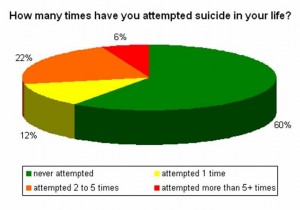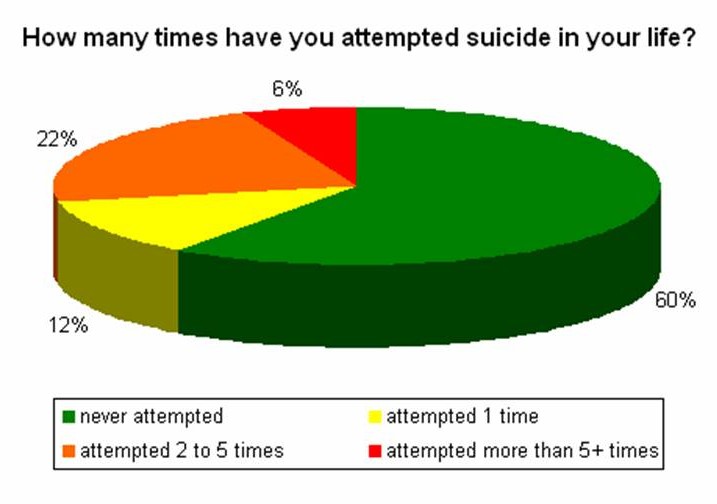Follow more from this author on Facebook here: Faith McLay
A recent survey by the Transgender Equality Network of Ireland revealed rather horrifying numbers: 78 percent of respondents said they had considered suicide; 63 percent within the past year. Nearly 40 percent had attempted suicide at some point in their lives, and of these 40 percent — almost three quarters of them more than once, and 6 percent more than five times.
The numbers for the US are just as bleak. In 2010 the National Transgender Discrimination Survey, the biggest survey on transgender discrimination ever done in the US, revealed that 41 percent of respondents had attempted suicide at least once. This is a rate more than 25 times higher than the national average, which is 1.6 percent.
 61 percent of American transgender students reported significant bullying at school, 5 percent were expelled. The situation is worst for those who are also bullied by their teachers. 59 percent of transgender people who were harassed by teachers reported having attempted suicide, 76 percent of those physically assaulted and 69 percent of those who were raped by teachers. (For the record: the report uses the prettier term “sexual assault” instead of rape.)
61 percent of American transgender students reported significant bullying at school, 5 percent were expelled. The situation is worst for those who are also bullied by their teachers. 59 percent of transgender people who were harassed by teachers reported having attempted suicide, 76 percent of those physically assaulted and 69 percent of those who were raped by teachers. (For the record: the report uses the prettier term “sexual assault” instead of rape.)
Rates of substance abuse are also significantly higher among transgender people than among the general population, and 2.64 percent are infected with HIV, which is more than four times the national average of 0.6 percent.
Regardless of whether we’re talking about Ireland or the US, there are many reasons for why transgender people have to live – and die – in such awful conditions. They often have difficulties finding a job and housing, and discrimination in the workplace is common. For example, the National Alliance to End Homelessness estimates that 20 percent of homeless youth in the US are gay or trans* and the estimate of the National Gay and Lesbian Task Force is 40 percent. Support and understanding from their family upon coming out is still a rather rare thing. Ireland is also one of the last members of the European Union where trans* people are not legally recognized in their preferred gender, and in most states of the US it’s difficult to impossible for them to get legal recognition as well. Add to that the staggering numbers of verbal, emotional, physical and sexual violence transgender people regularly face, and you have the perfect recipe for poor mental health.
Despite all this, most Western countries are becoming more friendly places for transgender people to live in, albeit excruciatingly slowly. YOU, dear reader, can be a part of this progress. You can start by taking to heart Wipe Out Homophobia’s appeal and show the folks over at Wipe Out Transphobia some love! Your support would be greatly appreciated.
And while you’re at it, educate yourself on how you can help transgender people by being a great ally. It’s not hard to do at all, but might mean the world to the trans* people crossing paths with you:
Trans@MIT Allies Toolkit
TransWhat? A Guide Towards Allyship
If you feel like kicking some serious ass on behalf of trans* people – you know, Ironman or Xena style -, you can also take on the
Trans Survey Reveals 40 Percent Attempt Suicide
Almost four-fifths of transgender people have considered suicide – survey
Transgender Americans face high suicide risk
Study: High Rates of Bullying, Suicide Attempts Among Transgender and Gender Non-Conforming People
On the Streets – The Federal Response to Gay and Transgender Homeless Youth
____________________________________________________________________________________________________
Follow and ‘like’ the author’s Facebook page here —-> Faith McLay Official, to stay updated.
Irish Survey Reveals Shockingly High Risk of Suicide Among Trans* People,






Pingback: The feminism and transgender liberation debate of 2015 – the story so far | FEL